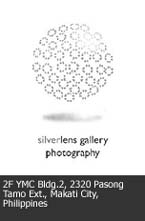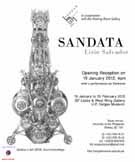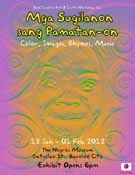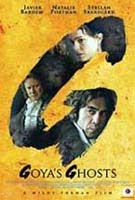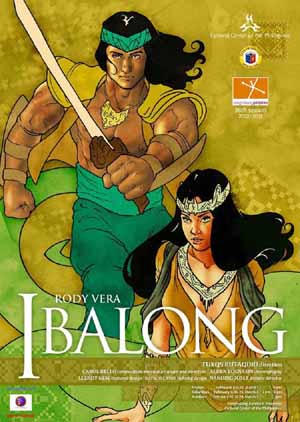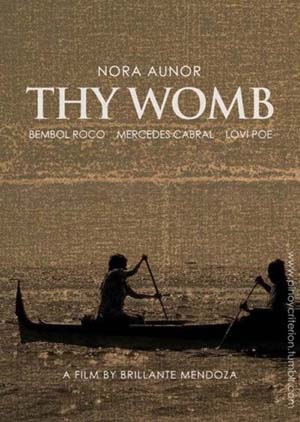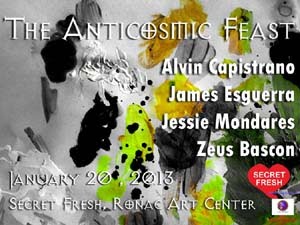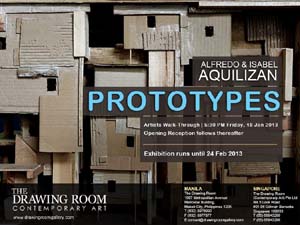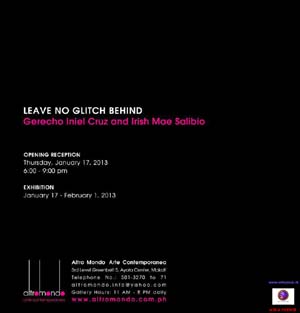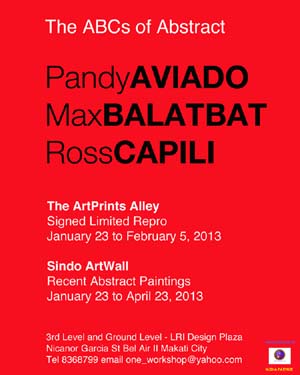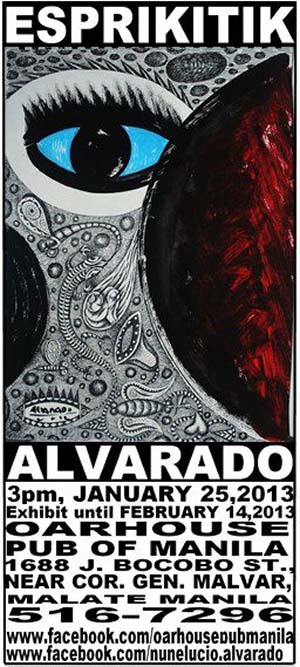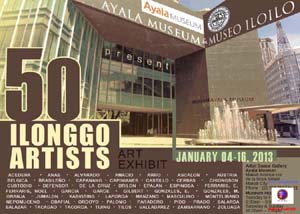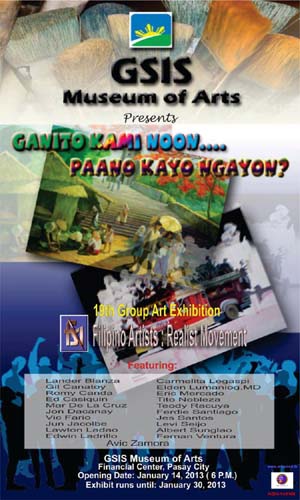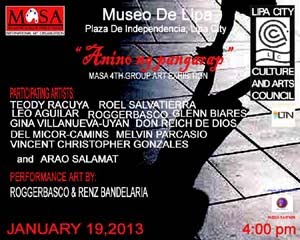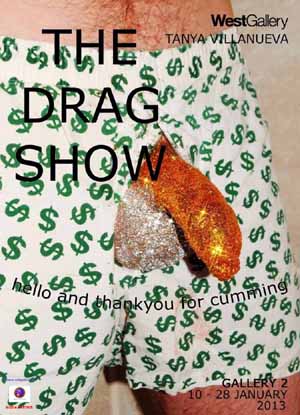

NEWS
Sunday, January 29, 2012
Saturday, January 28, 2012
A WARRIOR’S ART

A warrior's art
By Wilson Lee Flores (The Philippine Star)
Updated January 23, 2012 12:00 AM
Life beats down and crushes the soul and art reminds you that you have one. — Stella Adler
MANILA, Philippines - Recently, this writer and art lover learned from Drawing Room curator-owner Cesar “Jun” Villalon Jr. that sculptor-painter-musician Lirio Salvador met a near-fatal accident with a motorcycle hitting him in Dasmariñas, Cavite last Dec. 30. He continues to be confined at the intensive care unit (ICU) of UMC La Salle Dasmariñas Cavite.
Before this accident, the 43-year-old multi-disciplinary artist Salvador was given a grant by the Asian Cultural Council (ACC) in New York City for a half-year residency program there which was supposed to start end of this month January.
Salvador and the Elemento music band he founded were also supposed to perform from Jan. 12 to 15 at the recently-concluded Art Stage Singapore event in the Marina Bay Sands complex. Lirio is founder of the Elemento band, which specializes in experimental music. The musical instruments the band uses were all personally made by Salvador.
Salvador’s unique sculpture exhibit “Sandata” was originally scheduled for Jan. 19 to Feb. 25 at the Vargas Museum of University of the Philippines (UP) in Diliman, Quezon City. It successfully pushed through at 4:30 p.m. of Jan. 19, without his presence.
One of those who heard this news of the accident is National Artist BenCab based in Baguio City, and he donated his beautiful 2007 nude painting for sale through Lirio’s home gallery The Drawing Room in Makati City in order to raise funds for the latter’s huge medical expenses. BenCab is a friend of Lirio Salvador.
Other artists who followed suit and donated their art works for The Drawing Room fund-raising for Lirio Salvador included Kiko Escora, Alfredo Aquilizan, Troy Ignacio, Riel Hilario, Diokno Pasilan and others. This writer had purchased the BenCab and Escora works to support this fund-raising project. Jun Villalon said other groups are also doing their own fund-raising projects to help this artist.
Regarding the art exhibit of Lirio Salvador at UP’s Vargas Museum, let me share an essay by top art critic Patrick D. Flores:
“Zatoichi San” by Lirio Salvador and “Sandata ni Lirio 3”
Heavy Metal
By Patrick D. Flores
The allure of the object — its conspicuous, all-over luster — is sheer exterior. But it is material to its intimacy, mainly because it draws us to it, it makes us want to touch it, to even play it. Its tactility prompts us to have it and to hold it. After all, it is not only object, it is instrument that creates sound, charged with electrical current, and amplified for a mass to hear.
For Lirio Salvador, the confluence between visual art and music is intrinsic in the production of visual and musical form, with his own performance crossing the needless gap so that the object of art and the event of performing turn into a complex aesthetic effort, surely with all its syncopations.
Here lies the beauty of this fusion, or better still, confusion, which is the basis of all compelling art: the ability to defy predetermination and to prevent things from falling into place. Is it guitar or cello or sitar, or is it sculpture? Is he displaying an artifact or composing sound from it? Or is he staging both as an encounter of these seemingly disparate elements?
The initial temptation is to say “sheen.” It is not only veneer; it is also the promise of a material to relatively withstand nature. It appears stainless; it does not corrode supposedly, it refuses to be eaten away by rust. It may actually be chrome-plated. Whatever its constitution is, the impression it conveys is one of defiance against degradation, the unruly consequences of time and nature and the welter of the world on the whole.
Moreover, it is also a sign of “quality,” which is parlayed into the market of commodities as an important attribute. Being so, the stainless effect or the chrome-like coolness is an aspiration of the consumer to gain access to objects that define a particular capacity and, therefore, status. It signifies a shift in this economy that is also a shift in the technology of production and the cultivation of taste and affectation. Its mass production has in time made it a global merchandise, replacing the “traditional” utensil, for instance, and filling the shelves of stores. It has become ubiquitous.
But this is just carapace. For this sheen is tempered by the commonplace of the “surplus.” The artist unsettles our expectation of the “brand new.” His materials are gathered from different places, re-functioned from their original mechanisms, pirated from their authentic intentions. They are surplus, that is, excess or discard. They are ready-made spoons and forks, they are bike parts, gears, pipes, faucets, trays, kitchen ware, and the like — perspicaciously melded and cobbled together, hewn to streamlined fantasy.
These pieces are unique, therefore, not because they are singular, but because they are amalgam of mass-produced objects, which are then disaggregated from their contrivances and assembly lines to become a wonderful admixture of, again, con-fused factures. In the end, such sense of surplus generates a paradoxical whimsy of an industrial sensorium, on the one hand, and a folksy, improvised thingamajig, on the other. While the music it makes is acutely urban, experimental, and catatonic, its form is intricate, invested with ornament, baroque in its silver embellishments, in fact swarming like molten matter.
Think of the jeepney as a cognate proposition, previously a wartime vehicle morphing into a popular public transport in the present, heavily — ebulliently —adorned by painting and graphics, plying the most rugged and labyrinthine of routes in both metropolis and hinterland. It is the Filipino pasada, its past and its path, paved with a history of reconversions of the equipment of empire.
Finally, with “sheen” and “surplus” crafting a form that is on the border or boundary of anticipations, the “spectacle” of the artist performing with these inventions configures a milieu of interaction not only in terms of techniques mingling but also of people congregating for both the visuality and musicality of the erstwhile isolated, quotidian “object.” It is this greater assemblage that matters in the end: that the artist dissolves the sedimentations of preconceptions and recovers the possibilities of the inner dynamism residing in forms and how they could provoke action, the decision, the responsibility of the body to act on an aesthetic situation brought forth by an artifice of marvel. Moreover, it is a meditation on the machine, as some modern artists of the historical avant-garde had accomplished, the prospects of its penetration and malleability.
There is, surely, mimicry infused into this enterprise to the degree that the musical instrument is re-soldered, made to look like the norm, although idiosyncratically encrusted. Having said that, there is also a heady and sensitive understanding of the idiom of music, described by commentators as “atonal random electronica,” and how it is articulated through certain tools like the magnetic pick-up, the resonator, the synthesizer, and the amplifier. Place all this in the milieu of a gig with his band Elemento or with an orchestra in attendance as what happened in an American neoclassical auditorium in Pangasinan, and the outcome is thrilling — sterling and sonic bricolage.
The prospects of this innovative practice are myriad, and Salvador, — honed in a working class school in the belly of the city and living in a province of onerous free-trade zones — is a rare species in this art world. Gabriel Barredo’s ornate and sometimes mesmerizing scenographies are kindred endeavors. But his only peer in this pursuit is Diokno Pasilan, himself a musician and migrant who designs instruments from boats and performs in communities across the islands. The intersection between the visual and the musical, the industrial and the folk lies at the transdisciplinary talent of the artist who ensures a wider scope of making and making people move.
And if we reflect on the process of how material and affect converge, we will inevitably be led to how particles of the alloy used in plating everyday objects are ingested in our systems through the food we eat and the vessels on which they are served and how the waves of sound pervade the air that becomes our rhythm to which we dream.
These subtleties of permeation, of how specks and strings of metal and music come to belong to our substance prove to be Lirio Salvador’s sandata. It is translated as weapon of sound constructions in the bellum against monotony. It is defense against the decomposition of modernity. It is reverie against the cynicism of consumption. It is a warrior’s art.
Friday, January 27, 2012
THE PHILIPPINE ARTS FESTIVAL 2012 OPENS JAN.29

The Philippine Arts Festival 2012 Opens on Jan. 29
January 10, 2012
The National Commission for Culture and the Arts (NCCA), the country’s prime agency for arts and culture, ushers in the National Arts Month (NAM) with a festive opening of the Philippine Arts Festival (PAF) on January 29, 2012.
The PAF is NCCA’s major event in celebration of (NAM). The opening will be at the Rizal Park, promising a fiesta atmosphere highlighted by a kite making workshop and kite flying, and sumptuous samplings of the seven arts.
This will serve as a launch pad for a month-long fete that emphasizes the artistry of the Filipino people. PAF comprises the flagship projects of the seven committees of the NCCA’s Subcommission on the Arts, comprising architecture, cinema, dance, literature, music, theater and the visual arts.
Under its chairman Felipe de Leon, Jr. and OIC-executive director Adelina Suemith, the NCCA has taken the theme “Tradition and Innovation” for the festival, which aims to further Philippine art and the Filipino’s regard for local arts and culture. PAF will comprise workshops, exhibitions, forums, performances and many more, participated in by representatives of all the seven arts and taking place all over the country. Numerous artists are expected to take part in this grand gathering.
The annual celebration of National Arts Month started with the signing of Presidential Proclamation 683, in 1991, declaring February as National Arts Month. Over the years, NCCA as well as private and government agencies organize events and activities to highlight the artistic brilliance of the Filipinos. In recent years, the NCCA has been organizing a festival that showcases the artistic harvest of Filipino talents for NAM.
This year’s PAF will emphasize traditional art forms and genres as well as contemporary ones. There will also be tributes to National Hero Jose Rizal. Closing the PAF is the Ani ng Dangal awarding ceremony as well as recognition of contemporary artists for their contributions.
For the whole month of February, expect the seven committees to present their projects, in which the public is invited to come.
BERGGRUEN BUILDS COLLECTION FOR LOS ANGELES

Berggruen builds collection for Los Angeles
The German collector shelves plans to build a Berlin museum in favour of long-term loans to the US
By Gareth Harris. News, Issue 231, January 2012
Published online: 05 January 2012
The private collector and billionaire Nicolas Berggruen, son of the late German-Jewish art dealer and philanthropist Heinz Berggruen, is set to follow in the footsteps of the collector Eli Broad by sending several works on long-term loans to the Los Angeles County Museum of Art (Lacma), where Berggruen is a trustee. “I’m building up a collection for Lacma,” he says, “focusing on German artists such as Thomas Schütte, Martin Kippenberger, Gerhard Richter and Joseph Beuys.” Works by West Coast artists such as John Baldessari, Ed Ruscha, Charles Ray, Paul McCarthy, Bruce Nauman and Mike Kelley from Berggruen’s collection are also due to end up at the museum. “Los Angeles is still a developing cultural centre and that’s why one can make a difference there,” he says. His father, Heinz Berggruen, sold his collection of modern masterpieces for $120m—one-tenth of its value—to Berlin in 2000. There is now a museum in the city to house these holdings.
A spokeswoman for Lacma says that it has been in discussions with Nicolas Berggruen “regarding entering into an agreement for a very significant group of works [to go] on long-term loan to [the museum]”. Berggruen has already loaned one work to the museum, Chris Burden’s Metropolis II, 2010, which was being installed for display on the ground floor of the Broad Contemporary Art Museum, Lacma’s affiliate space, as we went to press. It is due to open on 14 January and is on loan for at least ten years. Billionaire philanthropist Broad paid $56m for the construction of the space, which opened in 2008, housing works from the non-profit Broad Art Foundation’s 1,600-strong collection.
Thursday, January 26, 2012
2012 ASIA COOPERATION PROGRAM ON CONSERVATION SCIENCE

2012 Asia Cooperation Program on Conservation Science
The National Research Institute of Cultural Heritage (NRICH) of Korea announces the inauguration of the "2012 Asia Cooperation Program on Conservation Science". The 2012 program will invite 9 participants not only in the field of conservation and intangible heritage but also of architectural studies. Participants will be divided into two groups during the year as follows.
1. 1st group: April 1, 2012 ~ June 30, 2012
2. 2nd group: August 1, 2012 ~ October 31, 2012
Any person who has minimum 3 year experience in national or state institutes of cultural heritage and holds good written and oral communication skills in English (or in Korean) can apply to the program.
Deadline of the application is February 10, 2012.
Find the attached file (2012 application form) here, download and send your application to acpcs@korea.kr (ACPCS official e-mail account was created for your convenience and our quick response), also fax is available +82-42-861-5168. Every contact address is included in the application form.
THIS IS NOT A TAX, SAYS BOSTON’S MAYOR

This is not a tax, says Boston’s mayor
Director of Museum of Fine Arts opposes sharp rise in payments to city, others stay tight lipped
By Erica Cooke. Museums, Issue 231, January 2012
Published online: 01 January 2012
Boston. The Museum of Fine Arts was dismayed to learn that the city of Boston is requesting a payment of $250,000 this year under new rules for the amount that not-for-profit organisations have to pay in lieu of taxes. The city plans to quadruple the bill to more than $1m by 2016.
The steep rise in contributions is a result of the Mayor of Boston Thomas Menino’s revised Pay¬ment in Lieu of Taxes scheme, known as Pilot. The art museums, and the city’s other not-for-profit organisations owning property that is worth more than $15m, face paying a fee that is based on 25% of what they would have to pay if they were charged the city’s commercial tax.
Previously, the museum only paid the city $46,000 to $65,000 a year. Meanwhile, the city’s Institute of Contemporary Art is being asked to pay $17,000 this year, a sum that will increase to $86,000 by 2016.
Tax exempt
“For 140 years we’ve been serving the city of Boston and the community of New England at no cost whatever to that community,” says Malcolm Rogers, the director of the Museum of Fine Arts. “We are a huge economic generator for the city and that’s why there should be investment in the arts, not taxation.” He warns that increasing Pilot fees will lead to cuts in activities and jobs at the museum.
Wednesday, January 25, 2012
PRINCE OF ASTURIAS AWARDS 2012

Prince of Asturias Awards 2012
IAO 01.05.2012
The Prince of Asturias Awards aim to reward the scientific, technical, cultural, social and humanistic work carried out at an international level by individuals, institutions or groups of individuals or institutions and are conferred in eight different categories: Arts, Literature, Social Sciences, Communication and Humanities, Technical and Scientific Research, International Cooperation, Concord and Sports.
Nominees should be outstandingly exemplary and their work or contribution should be of acknowledged international standing in each of the categories that the Awards comprise.
The awards shall be conferred in the following eight categories in the 2012 edition:
- Prince of Asturias Award for the Arts: to the individual, institution or group of individuals or institutions whose work in Cinematography, Theatre, Dance, Music, Photography, Painting, Sculpture, Architecture or any other form of artistic expression constitutes a significant contribution to Mankind’s culture heritage.
- Prince of Asturias Award for Literature: to the individual or group of individuals whose literary work represents a significant contribution to universal literature.
- Prince of Asturias Award for Social Sciences: to the individual, institution or group of individuals or institutions whose creative work or research in the fields of History, Law, Linguistics, Education, Political Science, Psychology, Sociology, Ethics, Philosophy, Geography, Economics, Demography or Anthropology, including the disciplines corresponding to each of these fields, constitutes a significant contribution to the benefit of Mankind.
- Prince of Asturias Award for Communication and Humanities: to the individual, institution or group of individuals or institutions whose creative work or research in humanistic activities as a whole or in relation to the social communication media, within the framework of the sciences and disciplines that both activities comprise, represents a significant contribution to universal culture.
- Prince of Asturias Award for Technical and Scientific Research: to the individual, institution or group of individuals or institutions whose findings, inventions and/or research studies in the fields of Mathematics, Astronomy and Astrophysics, Physics, Chemistry, Life Sciences, Medical Sciences, Earth and Space Sciences or Technological Sciences, including the disciplines corresponding to each of these fields and their associated techniques, represent a significant contribution to the progress and welfare of Mankind.
- Prince of Asturias Award for International Cooperation: to the individual, institution, group of individuals or institutions whose work with another or others in areas such as Public Health, Universal Education, Environmental Protection or Social and Economic Development, among others, constitutes a significant contribution at an international level.
- Prince of Asturias Award for Concord: to the individual, institution, group of individuals or institutions whose work has significantly contributed to fostering peace, the defence of human rights, freedom, solidarity, the safeguarding of heritage or, in general, the progress of humanity.
- Prince of Asturias Award for Sports: to the individual, institution, group of individuals or institutions whose efforts throughout their exemplary career have contributed in an extraordinary manner to perfecting, cultivating, fostering or disseminating sports.
The deadline for submitting nominations is 15th March, 2012.
For details, please go to this web site: http://www.fpa.es/en/awards/info/reglamento/
DON’T KILL THE GOOSE

Don’t kill the goose
We suggest the city looks for other sources of revenue, allowing cultural institutions to continue to do what we do best
By Malcolm Rogers. Opinion, Issue 231, January 2012
Published online: 01 January 2012
The Museum of Fine Arts, Boston (MFA), is one of the world’s great cultural institutions, whose impact on the quality of life of its city is immeasurable. But the generosity of spirit that built this great museum is being buffeted by a surprising entity—the City of Boston itself—which has put in motion a plan to drastically increase the “voluntary” contributions cultural institutions make through its payment in lieu of taxes (Pilot) programme (see p13). When civic leaders look to cultural organisations as a source of revenue, rather than as an invaluable resource for the communities they serve, it has dire implications nationwide.
Since the MFA opened its doors on 4 July 1876, it has been almost entirely privately funded. Unlike our peer museums—the Metropolitan Museum of Art, the Los Angeles County Museum of Art and the Art Institute of Chicago, which receive millions of dollars in financing from their cities—we are not funded by our municipality. Thankfully, Boston is a profoundly philanthropic city and the MFA has been supported in good times and difficult times by many committed individuals, foundations and corporations who understand the benefits of a world-class museum.
As a charitable organisation, the MFA is exempt by law from state and federal taxes. However, the programme developed by Boston’s Pilot task force circumvents this status by recommending payments for important city functions, such as the fire and police services. To the best of our knowledge the MFA is the only major art museum in the country that makes payments in lieu of taxes. We have participated in this revenue initiative since 1988 when the museum opened its parking garage. We contributed $55,000 in 2010/11. The proposed increases would raise our payments to $250,000 in 2011/12 and to $1,025,000 in four years. The new Pilot formula sets the payment at 25% of the estimated tax a cultural organisation would have paid if it were a taxable entity, less a 50% community service credit. In devising this plan the task force never sought the input of any of the city’s cultural institutions.
Tuesday, January 24, 2012
2012 INDONESIAN ARTS AND CULTURE SCHOLARSHIP

2012 Indonesian Arts & Culture Scholarship
Indonesian Embassy-Manila 01.13.2012
The Department of Foreign Affairs in cooperation with Indonesian Embassy invite prospective candidates to join the 2012 Indonesian Arts and Culture Scholarship. Since its earliest program in 2003, the scholarship has been awarded to 384 alumni from 50 countries.
The 2012 Indonesian Arts and Culture Scholarship offers the qualified applicant to learn and experience Indonesian traditional arts and culture for three months period, from March 31- July 13 2012, along with other participants from targeted countries, such as ASEAN members, Austria, China, Cook Island, Czech Republic, France, Germany, Hungary, India, Italy, Japan, Poland, Russia, South Africa, South Korea, UK, Spain, Suriname, Solomon Island, Tonga, Turkey and Vanuatu. During those 3 months period, awardees will be assigned in one of art centers located in Bandung (West Java), Denpasar (Bali), Makassar (South Sulawesi), Solo (Central Java), and Surabaya (East Java).
The awardees will live within or around the Art centers, allowing them to experience the local heritage and to interact with local communities. This in lines with the objective of the program; to encourage better understanding amongst different cultures of the participants, to understand Indonesian diverse arts and cultural heritage, and to cultivate a cultural cooperation to help thrive diplomatic relations in the region and worldwide.
A. PROGRAM
Awardees will have to participate in 1 week orientation in Jakarta
Sundanese arts and culture program (for those who are assigned to art center in Bandung)
Javanese arts and culture program (for those who are assigned to art centers in Solo and Surabaya)
Balinese arts and culture program (for those who are assigned to art centers in Denpasar, Bali)
South Sulawesi arts and culture program (for those who are assigned to art centers in Makassar)
All awardees will have to perform in arts and cultural night titled “Indonesia Channel”, to remark the closing of scholarship program.
B. SCHOLARSHIP COVERAGE
Tuition Fee (including extra-curricular activities)
Round trip ticket (economy class)
Accommodation (board and lodging)
Health Insurance
Monthly allowance of Rp. 1,500,000.00
C. APPLICATION SUBMISSION
Application should be sent to the Social and Cultural Section of the Indonesian Embassy Manila on or before by February 17, 2012.
E- Mail Address:
Social and Cultural Section: fungsipensosbud@yahoo.com.ph
Postal Address:
185 Salcedo St. Legaspi Village, Makati City, Philippines
P.O. Box 1671 MCPO, Metro Manila, Philippines
Tel. No. 892-5061/68 Fax No. 892-58-78 818-44-41
CONTACT DETAILS
For the application form and further information, please email to email addresses: fungsipensosbud@yahoo.com.ph / iacs2012@gmail.com Tel. No. 892-5061/68 Fax No. 892-58-78 818-44-41
For copies of the application form, please visit also the National Commission for Culture and the Arts: 633 General Luna St. Intramuros, Manila; tel.no. 5272192. Look for Ms. Maricel Diaz or Rulet Salvador.
HISTORIC HOUSE IN DANGER OF LOSING ITS MARBLES

Historic house in danger of losing its marbles
Outcry over English Heritage’s “disgraceful” support for potential sale of significant collection of classical sculptures
By Emily Sharpe. News, Issue 231, January 2012
Published online: 30 December 2011
Sefton. Moves are afoot to allow a group of Augustinian nuns to sell 102 classical sculptures from Ince Blundell Hall, a Grade II-listed estate in the borough of Sefton, near Liverpool, in north-west England. This would result in the dispersal of the greatest collection of ancient marbles in England outside the British Museum. Many of the historic interiors and exteriors were constructed specially to display the sculptures.
The collection was assembled by Henry Blundell (1724-1810), who built two extensions to the house—the Garden Temple (around 1775) and the Pantheon (1802-10)—to display his vast collection of antiquities, filling interior and exterior niches with works bought from some of Italy’s finest residences, including the Villa d’Este and the Villa Mattei. It is these marbles that the occupants, a group of August¬inian Sisters, want to sell. The estimated value of the sculpture varies, but one expert says it could be as much as £10m.
In 1959, Blundell’s heir, Joseph Weld, donated around 500 sculptures to what is now the National Museums Liverpool. He gave the house to the Sisters, who turned it into a nursing home.
An independent dealer has been in discussions with the Sisters about selling the sculptures since last summer. When Sefton council was alerted to this, it sought advice from English Heritage about granting permission “to remove, repair and replace fixtures and fittings”.
Monday, January 23, 2012
CONVERSATIONS: ITLOG NA PULA ATSARA AT IBA PA!

Conversations : ITLOG NA PULA ATSARA AT IBA PA!
Beyond the basic canonical approach to art-talk –
by Julie Tolentino and Yason Banal
curated by Lian Ladia
January 25, Wednesday, 8pm, Green Papaya Art Projects
Green Papaya Art Projects hosts two accomplished artists as they share their projects, collaborations and exhibitions outside of Manila. Discussions range from Madonna to Frieze Art Fair, Diamanda Galas to documenta. Julie Tolentino and Yason Banal from separate art communities share commonalities by being accomplice to a career outside and beyond Manila. Kamuning staples pork barbecue, itlog na pula, atsara, steamed rice and ice cold beer will be served.
About the Artists
Julie Tolentino creates intimate solo movement-based installations including time-based durational performances informed by critical discussions of race, queerness, borders and the spaces of movement. Tolentino founded the NY Clit Club (1990) as well as early 90’s queer weeklies hosting performance: Tattooed Love Child and Dagger. She has appeared in Madonna’s SEX Book, and a featured artist for an artist book by Rodarte photographed by Catherine Opie. She has been a member of the advisory board for the Lesbian, Gay Bisexual and Transgender Anti-Violence Project and The New Festival Film Fest in New York City. After twenty five years in NYC, Filipina/El Salvadorean artist Tolentino splits time between Los Angeles and the Mohave Desert, slowly building a solar-powered home and art residency studio. Tolentino’s work has been presented at the Haus der Kulturen der Welt (Berlin), Pact Zollverein (Essen), La Batofar (Paris), Performa05 Biennial (New York), Spill Festival/Visions of Excess (London), MOCA (Los Angeles) to name a few. Currently, she has received a fully sponsored grant from Arts Matters to research new work with Stosh Fila in performance and movement making. Her explorations and interviews include opening to the city of Manila, meeting and working with queer Filipino artists - as well as experiencing her first time to trip to the Philippines. Julie thanks Green Papaya, Roselle Pineda, Ling Quisimbing, Carlos Celdran, Daniel Darwin, and Jef Carnay.
Yason Banal's work moves between performance, installation, photography, video and text, taking myriad forms and conceptual strategies in order to explore, perhaps even trigger, suppressed associations and links. He obtained a BA in Film at the University of the Philippines, an MFA in Fine Art at Goldsmiths College-University of London, residencies at the Rijksakademie in Amsterdam and AIT in Tokyo, and visiting lectureships at London Metropolitan University and Tokyo National University of Fine Art and Music. His works have been exhibited at Tate Modern, Frieze Art Fair, IFA Berlin, Courtauld Institute of Art, Jakarta Biennale, Guangzhou Triennale, Yerba Buena Center for the Arts San Francisco, Art Cologne, Singapore Biennale and Oslo Kunsthall among others.
Green Papaya Art Projects
41 B T. Gener corner Kamuning Road, Quezon City 1103
http://www.greenpapayaartprojects.org/
Photo Credit :
Julie Tolentino, LEAD:Led. Photo by Codagnone/Lovett.
Yason Banal. Courtesy of the artist.
ONE DAY IN THE CITY: PASAY

“One Day in the City: Pasay”
by Metmuseum Manila on Wednesday, January 11, 2012 at 10:50am
“One Day in the City: Pasay” opens to the public on January 25, 2012 up to March 31, 2012 at the Tall Galleries of the Metropolitan Museum of Manila.
The majority of the world’s population resides in cities. Sometime in 2007 a UN study indicated that for the first time in history the number of people living in urban areas has outweighed those living in the rural. With the growth of megacities, or cities like Metro Manila with populations exceeding 10M we are seeing that for the majority of the world’s population, life in the 21st C will most likely be spent in urban areas.
The city is a space. It is composed of areas defined in many ways by different factors. The science of city planning and the politics of its management have seen our urban spaces grow in various permutations resulting in constant shifts in the physicality of the cities we live in.
The city is a place. We live, work, play within its confines and conditions. It is a repository of our memories, provides stimuli for our daily experience and defines who we are. As its inhabitants we imbue it with character and culture, and the cities grow as we do, in a symbiotic relationship that only urban citizens feel and understand. The peculiarities, moods, spaces and places of the city and its dwellers are what we want to capture in this show.
“One Day in the City: Pasay” is a photographic exhibit focusing on Pasay City. The show depicts facets of the urban fabric and the experience of city dwellers as seen thru the eyes of student photographers from the De La Salle-College of Saint Benilde AB Photography program. The photography project is a way of showing how life is in one part of a 21st century Asian megalopolis like Metro Manila, and will provide a counterpoint and a response to the Spanish photography show “Photo By Photo: A Portrait of Spain” exhibited at the Met.
The show is organized by The Metropolitan Museum of Manila, The De La Salle-College of Saint Benilde School of Design and Arts, The City Government of Pasay, Canon Philippines Inc. and the Spanish Embassy Manila.
ARAB PROTESTERS PUT THEIR ART ON THE STREETS

Arab protesters put their art on the streets
Artists have used the walls of Cairo, Damascus and Tripoli to document the uprisings
By Anny Shaw and Gareth Harris. News, Issue 231, January 2012
Published online: 30 December 2011
Cairo. The Cairo-based artist Ganzeer’s stencil of Egyptian riot police, bravely painted on the side of the Mogamma government building on Tahrir Square last month, is the latest in a long line of works of art that have flourished in Egypt’s streets since Hosni Mubarak was ousted in February 2011. In Libya and Syria too, radical publishing and pamphleteering, street art and graffiti have thrived, even appearing in deeply conservative Saudi Arabia.
Murals for the dead
Egypt’s growing group of young artists working in the street, including Ganzeer, Keizer, El Teneen, Hosni and Hany Khaled, are engaging actively in the revolution. Ganzeer, 29, who exhibits his work both in and out of galleries (in a recent interview in Bidoun magazine, he said his gallery work is “the least satisfying” as it “is not relevant to life”), is painting a mural for each of the people killed during the 18 days of revolt that began in January 2011. Since this is believed to number as many as 850, this is a major undertaking.
“What is interesting to see in Egypt, and in all these countries, is that artists are not only going out into the city, they also become agents of change in society,” says Hans Ulrich Obrist of London’s Serpentine Gallery, who is chairing a discussion on art patronage in the Middle East as part of a summit at the British Museum and the Royal College of Art (12-13 January). “If you think about it in terms of the Russian Revolution and Mayakovsky saying ‘the streets are our brushes, the squares our palettes’, it’s about art going beyond the museum and blurring the boundaries between art and life.”
Sunday, January 22, 2012
ONLY ORIGINALS INTERNATIONAL ART COMPETITION

Only Originals International Art Competition
Calendar
December 1, 2011 - Entries open
March 1, 2012 - All entries must be received
April 1, 2012 - Up to 20 finalists will be notified via e-mail. The names of the finalists will be posted on http://onlyoriginals.org.
May 1, 2012 - Finalists must submit digital portfolios by this date.
June 1, 2012 - Online exhibition begins. Prize winner is announced.
November 30, 2012 - Exhibition closes
Eligibility
Open to artists ages 18 and older. The artist must reside in a country where PayPal allows prize money to be transferred to a local bank account, or to be withdrawn by check.
Each artist may submit up to three works, created within the last three years.
Previous competition finalists may submit works that have not been displayed on the web site.
All media, excluding videography, will be considered. Sculptors are encouraged to submit views of their works from various angles.
All works must be original and produced by the submitting artist. If the artist works from photographs, he/she must own the rights to those photographs.
ONLINE PIRACY BILL HAS FREE SPEECH SUPPORTERS UP IN ARMS

Online piracy bill has free speech supporters up in arms
Artists who use others’ work could be fined or have their websites shut down
By Martha Lufkin. News, Issue 231, January 2012
Published online: 30 December 2011
Washington, dc. A bill being considered by a House of Representatives committee last month could divide the art world into two camps: those who want to protect their creations from being used online and those who like to use the work of others. The legislation, intended to stop piracy on the web, is meeting strong opposition: Wikipedia co-founder, Jimmy Wales, has proposed a blackout on their site. The measure would impose criminal fines and allow the US government and individuals to shut down websites for alleged infringement. Critics say the steps would restrain free speech and cause service providers to filter out content they were unsure of.
Theodore Feder, the president of the Artists Rights Society in New York, says that it backs the bill, saying: “It will help to curtail online piracy, which adversely affects the interests of our artist members.” He says that the law would help “remedy some of the weaknesses” of copyright protection in the digital age.
Music and film producers want the bill to be passed. Online giants like Google, Twitter and Yahoo are opposed and “techies” devoted to a free internet are up in arms.
The bill, the Stop Online Piracy Act (Sopa), introduced by Republican representative Lamar Smith, is designed to fight websites identified as dedicated to copyright infringement. If passed, the attorney general could require US internet providers to deny access to such sites and could require advertisers and payment services, such as Paypal, to stop doing business with them. If the service provider acts reasonably to comply with the order, or voluntarily stops business with a suspected site, it would be immune from liability. The bill also makes it a crime to distribute or reproduce electronically a copyrighted work with a value over $1,000.
Saturday, January 21, 2012
GERMANY │ NORDART 2012 │ INTERNATIONAL CALL FOR VISUAL ARTISTS

Germany | NordArt 2012 | international call for visual artists
Deadline: January 31, 2012
Website: http://www.kunstwerk-carlshuette.de/en/application_form.html
Call for applications from visual artists worldwide to participate in the international exhibition of visual arts: NordArt 2012, 02.06.–07.10.2012
Deadline for applications 31.01.2012
PDF download + application form
Kunstwerk Carlshutte, a non-profit initiative of the ACO Group, and the towns of Budelsdorf and Rendsburg, organises the NordArt, an annual international exhibition of visual arts from June to the beginning of October. The art exhibited at NordArt is selected by a jury and features all visual art media. The exhibition in summer 2011 displayed the work of 250 artists from 55 countries, selected from 1200 applications from 72 countries. Curator of NordArt: Wolfgang Gramm.
NordArt-Prize:
The NordArt-Prize worth 10.000 Euros is being sponsered by Hans-Julius and Johanna Ahlmann (ACO Group) since 2010. Each year one artist is awarded with the aim to support the art and culture scene. The awardee will be annouced during „The Long Night of the Lights” in September and is invited to participate again in the following NordArt. The award ceremony will then take place at the opening of the following NordArt.
Public Choice Award:
The visitors of the NordArt can vote for their favourite artist. The Public Choice Award will be awarded during ‚The Long Night of the Lights‘ in September. The 1st Award is worth 1000 Euros. The three winners are invited to participate again in next years NordArt.
NordArt-Symposium:
Each year the exhibition is preceded by the highly respected international NordArt Symposium, bringing together different generations of artists to share experiences and make art – all reflecting the ethos of NordArt itself. Approximately 10 artists are invited to attend the symposium and create large works for the NordArt. If you wish to attend the symposium, please mark the “Symposium” box in the application form. For this application we require a project description with details on the materials and dimensions, estimated time required, photos with examples of works. The participants at the symposium enjoy free materials, a workplace and accommodation at the exhibition site itself. The work created remains the property of the artist and will be exhibited at NordArt for at least 2 years – with the exception of works, which are sold.
TREASURY RULES STOP MUSEUMS SPENDING DONORS’ CASH

Treasury rules stop museums spending donors’ cash
Nationals reluctantly set up trusts to help gain access to their own reserves
By Martin Bailey. Museums, Issue 230, December 2011
Published online: 14 December 2011
National museums are reluctantly setting up charitable trusts to bypass Treasury restrictions on spending future financial reserves. Current reserves, much of them from philanthropic donations, total more than £285m (The Art Newspaper, November 2010, p8).
The British Museum (BM), the Victoria and Albert Museum (V&A) and the National Portrait Gallery are among the institutions establishing trusts.
A year ago, Neil MacGregor, the director of the BM and author of a report on museum endowments, described the situation as “positively damaging from a charitable perspective”. The creation of independent trusts would be “a cumbersome and awkward structure designed to accommodate heavy-handed bureaucracy rather than encourage philanthropy,” he said.
The National Museum Directors’ Conference regards restrictions on reserves as a “pivotal” issue, since “any donation that is not spent within the financial year [in which it is given] is effectively frozen”. Treasury regulations “hinder museums from spending the donations they have received in previous years and may stop philanthropists from making future donations”. The conference warns that “many philanthropists may not wish to donate to an independent body”.
Among potential problems is that differences could arise between the trustees of a museum and its independent trust.
Trusts are being created as a result of Treasury regulations requiring authorisation for government bodies to spend reserves. This applies to national museums, which now raise large sums in donations. Although the Department for Culture, Media and Sport (DCMS) is sympathetic to their plight and keen to encourage private philanthropy, the Treasury is unwilling to make an exception for museums.
Friday, January 20, 2012
ART CRITICISM AND THE PLEASURE PRINCIPLE

Art criticism and the pleasure principle
A threatened culture sector insists on the ennobling, moral power of art – but that isn't what keeps me coming back to the greats
Walter Pater was one of the most honest critics to ever have lived. In his book The Renaissance, this Victorian scholar says something subtly disturbing to many people who love the arts. The purpose of criticism, he argues, is to identity and understand the particular types of pleasure that works of art can give us.
Pleasure! This is something few critics have ever been prepared to be so open about. Art, in a philistine world, is forever fighting its corner. Arts administrators resisting cuts feel obliged to insist on the deeper value of art, its use to society, its ennobling purposes. Artists themselves, when interviewed, also want to come across as serious people doing something of immense political and cultural importance. Only rarely does an artist reject the idea of social and spiritual purpose – as Bob Dylan does in the 1967 film Don't Look Back, when he sneers at journalists asking him to explain his "message".
Pater was art's bravest whistleblower. He said frankly that works of art exist to give us pleasure, just like wines, or divans, or tobacco, or whatever else filled the archetypal Victorian aesthete's boudoir.
It's time for me to come clean, too. The reason I write about art is because it gives me so much pleasure. I delight in art. It is a drink, a feast. And this is the true reason why, much of the time, I choose to stress the great paintings and sculptures of history. This isn't some cliched juxtaposing of figurative art and conceptualism – just a recognition that if you are looking at and writing about art every day you may as well explore the headiest flavours, the richest recipes. If you were a professional food critic, would you want to write about crisps – or haute cuisine? Great paintings that have stood the trust of time are like wines that have matured for centuries.
If the most profound pleasures are afforded by a Titian, however, new art too looks very different to the aesthete. Forget, for a moment, all the chatter about social purpose and serious meaning. Look at today's art from the point of view of pleasure. What looks best? Well, you'll get something like the eclectic mix of contemporary artists whose works I most enjoy. The cocksure concoctions of Damien Hirst, the sensual sophistication of Cy Twombly, the sexuality of Lucian Freud, the cheek ofJeff Koons, the beauty of Richard Wright, the generosity of Martin Creedand the audacity of Tracey Emin – these are pleasures, not duties.
Art that feels like a duty is probably bad art. But most of the art industry is geared towards foisting that kind of art on us. Bad art changes over the centuries far less than we think. Today's theory-heavy video installations are often modern equivalents of pompous and moralising Victorian paintings. It's the joyous, uninhibited art that truly matters – and this is what keeps me hooked.
BERLIN’S 2OTH-CENTURY ART TO GAIN SPACE OF ITS OWN

Berlin’s 20th-century art to gain space of its own
The director of the Nationalgalerie, Udo Kittelmann, gets the green light to rehang Gemäldegalerie with modern masters
By Axel Lapp. Museums, Issue 230, December 2011
Published online: 14 December 2011
Udo Kittelmann, the director of the Nationalgalerie, and Michael Eissenhauer, the director general of the Staatliche Museen zu Berlin (Berlin State Museums), announced last month that the Gemäldegalerie, which houses Old Master paintings, could become a museum of 20th-century art “in the next couple of years”.
The capital of Germany should have a prominent gallery dedicated to 20th-century art that does not try to conceal the “painful” gaps in the collection caused by the nation’s traumatic past, says Kittelmann.
The Old Masters currently housed in the Gemäldegalerie in the Kulturforum, which is near the Neue Nationalgalerie, would move to an extension of the Bode Museum created by converting a former garrison across the road. Kittelmann and Eissenhauer spoke of their vision at the opening of “Divided Heaven, The Collection: 1945-68” (until late 2013) at the Neue Nationalgalerie.
Securing space for a 20th-century art museum in Berlin is high on Kittelmann’s agenda. Because the Mies van der Rohe-designed Neue Nationalgalerie is listed and lacks space for a permanent display, art from important historical periods is not regularly on show.
An added impetus to have more space came a year ago when Berlin-based collectors Ulla and Heiner Pietzsch donated 150 works of art, valued at €120m. Their gift was made on the condition that the works by artists including Magritte, Pollock and Ernst are integrated into the collection and that one day they will be on permanent display.
Thursday, January 19, 2012
COMPETITION LAUNCHED TO DECORATE MOSCOW CHURCHES

Competition launched to decorate Moscow churches
Programme aims to build 200 churches across the Russian capital
By Sophia Kishkovsky. Web only
Published online: 15 December 2011
The Russian Orthodox Church has launched a competition for the decoration of 200 modular churches that are being speedily built with state support in the Russian capital. Patriarch Kirill of the Russian Orthodox Church has said that the churches are desperately needed in crowded districts of unsightly Soviet high rises.
After laying the cornerstone of the first church in the 200 churches programme in April, the patriarch said that [the new churches] account for “about one-fifth of what was destroyed in the Soviet era”, and that some districts have just one church for up to 200,000 residents.
Some residents of Moscow’s “sleeping districts”—largely residential areas—have petitioned for new churches. Others have protested, saying the sites allocated by the city are in much needed parks or squares. One church is being constructed on the site of the 2002 hostage taking of nearly 800 people by Chechen rebels at a Moscow theatre during a performance of “Nord-Ost”.
The competition for the decoration of the 200 churches was announced in November at “Pravoslavnaya Rus,” or “Orthodox Rus,” an annual fair and conference held in the Manezh exhibition hall at the foot of the Kremlin's walls, devoted this year to the rebuilding of the Russian Orthodox Church. “These churches must become not only a decoration of our city, but truly a phenomenon of civic and church art of our 21st century,” said Archimandrite Tikhon Shevkunov, the executive secretary of the Patriarchal Council for Culture, at a news conference. “They must become a kind of pearl of ancient tradition, uniting historic Moscow with its new districts and buildings.” He said the terms of the competition would be announced by the end of the year.
Since the collapse of communism, a new generation of iconographers and artists specialising in religious art has appeared. New examples of church architecture have also been created, such as a wooden chapel, an homage to 16th- and 17th-century tented roof churches, at Butovsky polygon, a killing field on the edge of Moscow where at least 20,000 people were shot and buried from August 1937 through October 1938.
Wednesday, January 18, 2012
PULP FICTION

Artinformal invites you to the opening night of:
Pulp Fiction is a group exhibition featuring works on or with paper by various visual artists.
This exhibition aims to bring together a diverse selection of works by giving the artists free range of concepts that focus on paper and paper-made objects as medium or as source of inspiration or innovation.
The show will open on January 19 (Thursday) at 6PM. The exhibit will be up until February 4, 2012.
Featuring Works by: Pergy Acuña, Isabel Afable, Aldy Aguirre, Fran Alvarez, Zeus Bascon, Anjo Bolarda, Raf Banzuela, Peewee Bisnon, Vermont Coronel, Celina de Guzman, Yas Doctor, Nina Garcia, Ramona Gaston, Clarissa Gonzalez, Rommel Joson, Gigi Lapid, Veronica Laurel, Jacob Lindo, Hannah Liongoren, Quiccs Maiquez, Kat Medina, Isa Natividad, Maki Navarrete, Ak Ocol, Carina Santos, Bru Sim, Gabriel Tiongson, Brian Vallesteros, Chalk Zaldivar and Tof Zapanta
DISPUTED MUNCH AT LEOPOLD MUSEUM

Disputed Munch at Leopold Museum
Leading expert has “severe doubts” about work lent to Vienna museum by Norwegian collector
By Clemens Bomsdorf. Museums, Issue 230, December 2011
Published online: 15 December 2011
The attribution of a painting on show in Vienna’s Leopold Museum as work by Edvard Munch has been questioned by a Norwegian expert in the artist’s work, who is the author of the Munch catalogue raisonné, published in 2009. Two years ago, when Two Children on the Beach, around 1904, was first displayed in the Austrian museum, an accompanying caption said that it was “attributed to Munch”. Now the painting, which belongs to a leading Norwegian collector, is displayed with no such caveat.
Gerd Woll, the author of the Munch catalogue raisonné, and the former senior curator at Munch Museet in Oslo, says she “very much doubts” the work is by Munch. When researching the catalogue raisonné, Woll was asked to include the painting ¬several times, but declined. “When I saw the painting I was doubtful, and where there are severe doubts a work should not be included,” she says. “We were even threatened with a court case if we didn’t include it,” she ¬recalls. Woll questions the painting’s authorship because: “There is no documentation, such as provenance or exhibition history, connecting this painting to Munch and the subject has not been recognised in any other work by Munch. Technical analysis shows similarities to paintings by Munch, but [this] is ¬insufficient evidence.”
The painting on show in the Leopold Museum comes from the collection of Håkon Mehren. (The Leopold Museum’s caption states that it is from a private collection.) Mehren is confident that the painting is by the artist. Mehren was a close friend of the late collector Rolf Stenersen and regarded him as a father figure and tutor. Stenersen owned a large collection of Munch’s work, founded the Stenersen Museum and wrote a biography of the artist. “The work is definitely a Munch. He only painted himself as a child twice: once in Eventyrskogen [around 1903], which hangs in the National Gallery [in Oslo], and once in this work,” Mehren says.
Mehren bought Two Children on the Beach about 30 years ago, he says, but could not say who previously owned the work. Mehren admits that documentation of the painting’s provenance is lacking, but cites instead the technical analysis made by the Doerner Institute in Munich, which reinforces his confidence in the work. When approached by The Art Newspaper, Andreas Burmester, the director of the Doerner Institute, declined to discuss the analysis on the grounds that the institute never comments on its work to third parties.
Subscribe to:
Posts (Atom)




























































